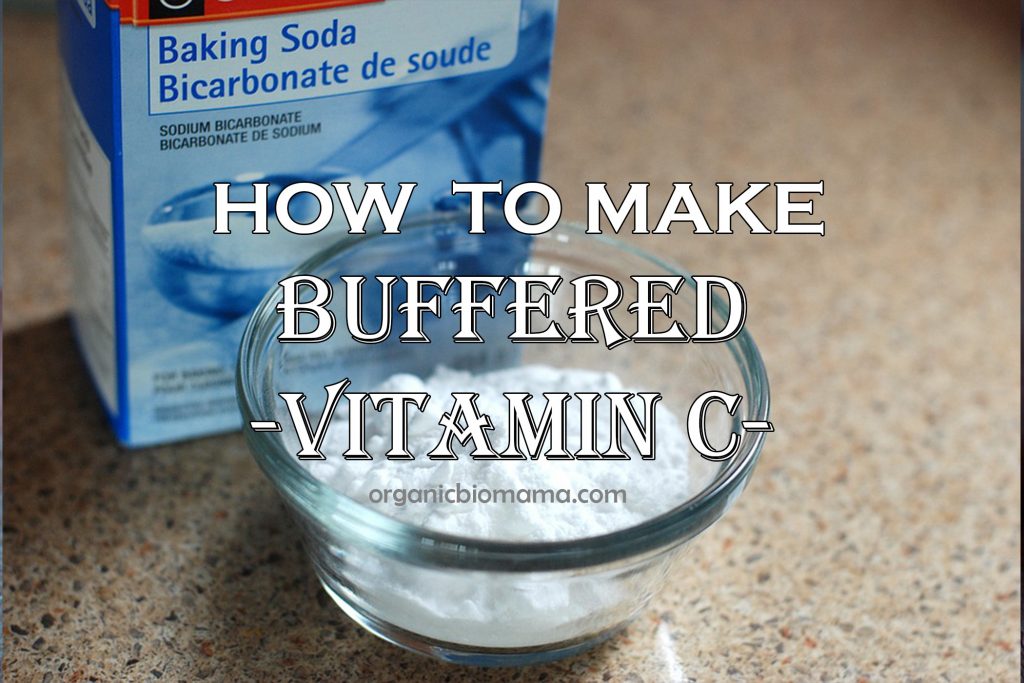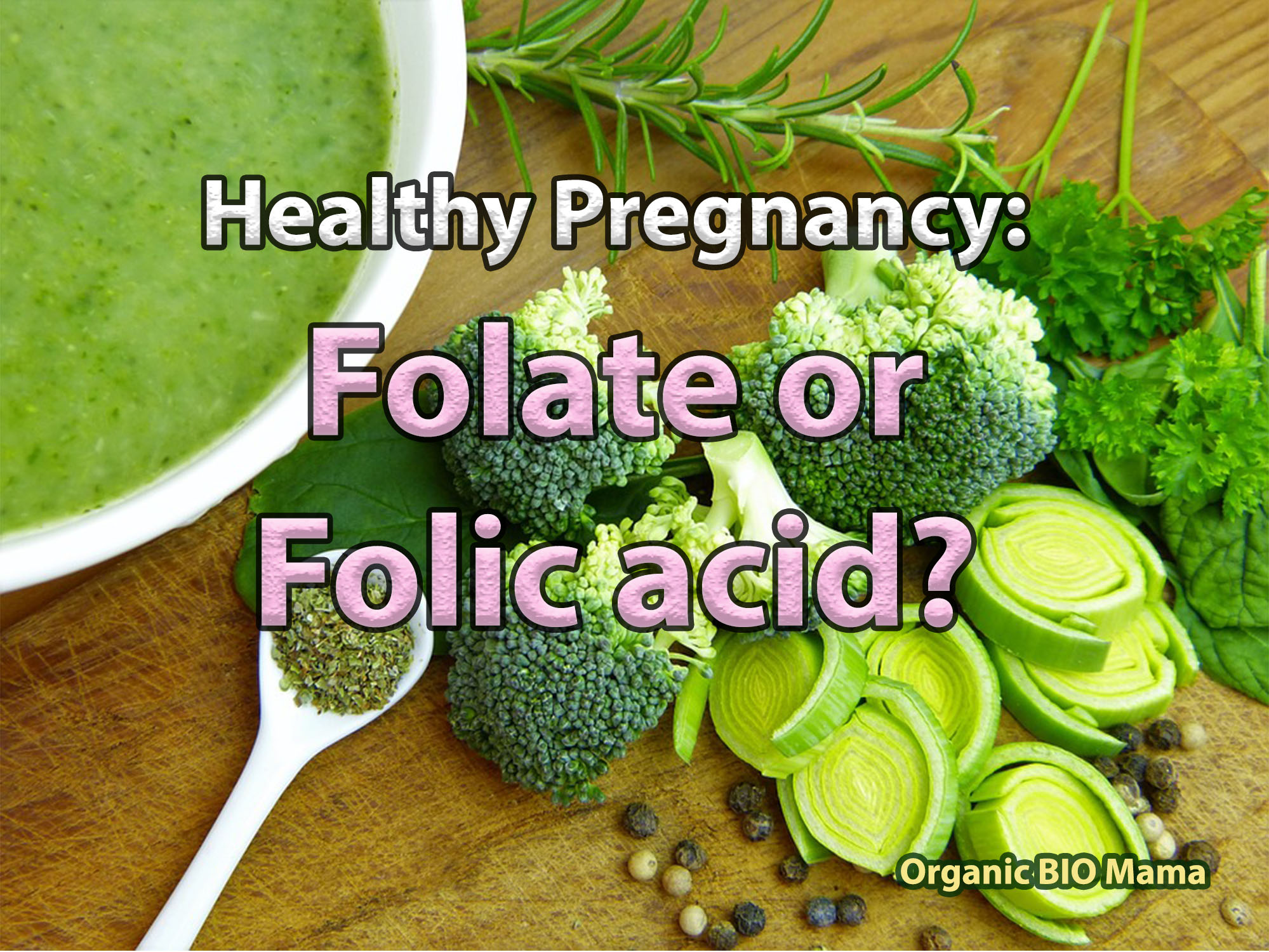How to make sodium ascorbate at home with ascorbic acid and baking soda?
You must be wondering why not use straight ascorbic acid and why make sodium ascorbate?

Sodium Ascorbate and Ascorbic acid are both called Vitamin C, but they are not same. Sodium Ascorbate is a buffered form of ascorbic acid and the ascorbic acid is the isolated part of Vitamin C. Vitamin C refers to the compound of nutrients containing ascorbic acid, that are present in many fruits and vegetables.
Straight pharmaceutical grade ascorbic acid is too acidic (4.2 pH). The body’s pH level is around 7.35-7.45 (slightly alkaline). When ascorbic acid reaches the bloodstream, the body will have to neutralize the pH by taking calcium and other minerals from your bones, teeth and other organs. Sodium ascorbate is a buffered version of Vitamin C and it is close to 6.9 pH, which is still slightly acidic but manageable.
You can easily buffer ascorbic acid at home with the help of baking soda and turn ascorbic acid into sodium ascorbate. The recipe is below.
How to make Buffered Vitamin C (How to make Sodium Ascorbate by buffering Ascorbic acid)
Ingredients:
- 1 Tablespoon Ascorbic acid powder (what kind to buy)
- 1 Tablespoon plus 1 teaspoon Sodium Bicarbonate (where to buy)
- 2 oz + 2 oz Distilled water (where to buy)
Instructions:
- Mix 2 oz distilled water with ascorbic acid. Stir till dissolved.
- In another jar, mix 2 oz distilled water with baking soda (sodium bicarbonate). Put on the lid and shake till soda dissolves.
- Slowly (very slowly) dribble the soda water into ascorbic acid solution while stirring. The mixture will bubble furiously. Keep dribbling and mixing. Mix until bubbling stops.
- When the bubbling stops, it means ascorbic acid and sodium ascorbate have reacted with each other and now you have Sodium Ascorbate!



I find this very confusing as surely you are left with a liquid? So when you come to make the liposomal vitamin C how do you know how much to use? You say for the small batch to use 1 tbsp and 1 tsp, but are you talking about the liquid you are left with when making your own? I’d appreciate clarification. Thanks!
Hi, Laura! If you are making liposomal vitamin C, then you just use this liquid sodium ascorbate and will not add that last 4 oz of water. So, the recipe for liposomal vit.C would be 1/4 cup (33 g) Lecithin, 10 oz (300 ml) Distilled Water, and this Liquid sodium ascorbate.
Hi Organicbiomama, I see you are using ascorbic acid powder in your homemade recipe to make Sodium ascorbate. I actually have LIQUID lipisomal Ascorbic acid. How would I incorporate the liquid instead of powder into the recipe?
The dosage says 1TBL= 3000mg
Hi, Lonna! Never tried that, but I think if the ascorbic acid is already encapsulated, it would be hard to turn it into sodium ascorbate.
Get Vitamin C in powder form on Amazon
Hello – so appreciate your efforts to help educate the public. Great service!
Is it possible to use magnesium carbonate instead of baking soda?
Most likely.
If adding the magnesium carbonate causes the solution to bubble/fizz then it works.
Yes, it’s confusing! I’m a simple guy, so like to keep things simple. Sodium, calcium, and other minerals are commonly used to buffer Ascorbic acid, but I prefer the known purity of the pharmaceutical grade. So I will consume a calcium containing food, e.g. tsp.+ of Greek Plain Yogurt, AND about 1/8 tsp. of Himalayan or Redmond Real Salt known for their high mineral content. Plus, I can add a little cocoa or cacao for the same reason, especially the copper content, just prior to Ascorbic acid. httpss://www.nutritionadvance.com/cocoa-powder-nutrition/
Hi!
Could you possibly express the weight in grams instead of “spoonfuls”?
Hi, Denise! I will try to measure in grams when I make it again. Thank you for the question.
This seems like a LOT of baking soda taking into account that the pH of baking soda is 14!
Other recipes mention 2 parts ascorbic acid to 1 part baking soda…
Have you tested the pH of the resulting mix?
Hi there! No, I didn’t test it yet. I’ll look into it. Thank you!
I think this is an important point on making Sodium Ascorbate because this could potentially result in a very large intake of unnecessary sodium (and a foul, salty taste). I see this everywhere and I encountered the problem myself when I started, so I found the answer. Simply speaking the ratio is 1:1, but importantly, not by weight. The weight ratio is 2:1, 2 parts Vitamin C to 1 part Baking Soda.
To make 1 molecule of Sodium Ascorbate you need 1 molecule of Ascorbic Acid and 1 molecule of Sodium Bicarbonate.
Vitamin C + Baking Soda = Sodium Ascorbate + Water + Carbon Dioxide
C6H8O6 + NaHCO3 = C6H7NaO6 + H2O + CO2
Molar Mass / Molecular Weight;
Ascorbic Acid = 176.12 g/mol
Sodium Bicarbonate = 84.0066 g/mol
(That is close enough to 2:1 for measurement’s sake. A scale is ideal, but you can also reliably do this by volume with powdered Vitamin C)
Sodium Ascorbate = 198.1059 g/mol
Water = 18.01528 g/mol
CO2 = 44.0095 g/mol
THEREFORE, if you take 176.12 grams of Ascorbic Acid and mix it with 84 grams of Sodium Bicarbonate and react it in water (slowly) you’ll end up with 198.1 grams of Sodium Ascorbate (dissolved in water) & 18 (more) grams of Water, as 44 grams of CO2 float off into the air.
You can use a minimal amount of water then top up as needed for your recipe, but there should be enough water that everything which remains after the fizzing is dissolved. Whether you use a scale or measuring spoons, you can adjust the final product to your liking with small amounts of Ascorbic Acid or Sodium Bicarbonate so it tastes more tart or more neutral.
Potency/Equivalence
(198.1:176.12)
(1000mg of Sodium Ascorbate will equal 889mg of Vitamin C in terms of potency)
(1124mg Sodium Ascorbate = 1000mg Vitamin C)
httpss://en.intl.chemicalaid.com/tools/equationbalancer.php?equation=C6H8O6+%2B+NaHCO3+%3D+C6H7NaO6+%2B+H2O+%2B+CO2
Thank you for the chemical run down so precise, I wad going to look it up but you did the work for me 😉 . Thank you also to the author for the wiki. I did find it ready made so I’ll look to see if there is a big price difference here.
This is very helpful information thank you! I was also wondering about the ratio as I have always done 1:2.
I would say that since we are mostly too acidic, the amount of soda is probably fine. As you might know, many people take just the soda and water regularly to bring in alkalinity.
Still have to be careful because too much baking soda induced alkalinity, can lead to arrhythmia and even death.
You would think that in order for your body to be more alkaline, it’s best to take in alkaline. But from what I remember from the Master Cleanser (aka “lemonade diet”) when you take in acid things, your body produces more alkaline in order to buffer it. This is why if you have acid reflux, one of the home cures is to drink water with a little apple cider vinegar 30 minutes before a meal, to prevent your stomach from producing so much acid.
The pH of Baking Sosa is about 9, not 14. (It is not a strong base). It’s a common buffer used to neutralize acid. The instructions are basically saying add baking sofa, until bubbling stops, that means all vitamin c and baking sofa have reacted together, and adding more, would mean just more baking sofa in the water.
The recipe seems to require you to only add as much bicarbonate as will cause a reaction (fizzing/bubbling), so if you add slowly you should get the right ratio.
1TBS + 1 tsp baking soda should neutralize 1/4 cup of Ascorbic acid, not 1 tsp of Ascorbic acid. I’m confused by your amounts.
Hi there,
I hate the taste of sodium bicarbonate! Is there a more palatable option, (other than tartaric acid; I believe it’s made from grapes which I’m allergic to)?
With gratitude,
Klara.
The ascorbic acid neutralises the tast of sodium bicarbonate, turning it into sodium ascorbate, a milder flavor.
You would probably find most alternatives less palatable.
If you make your own sodium Ascorbate as in the instructions, but the Liposome calls for “powder”. Is it ok to just drain off most all the water and put the 1/4 cup of “paste” in the mix?
Hi, Gary! You just reduce the amount of water in the liposomal Vit C recipe.
I have a question about the Lecithin. I’ve never used it before, and I was wondering whether mine is rancid or something. It’s NOW Supplements Sunflower Lecithin. It doesn’t smell fresh. It doesn’t smell like fish food or grain meal, it smells astringent, faintly like an open can of varnish. The color is on the dark brown/grey side. A number of reviews complained of receiving spoiled product, but I don’t have anything to compare it to. I’ve added about 125% what the recipe calls for and it’s still rather thin and watery.
You really need to change your amounts. Who gave those to you?
The ratio of ascorbic acid to sodium bicarbonate should be 11:4. So 11 parts of AA to 4 parts of SB. Or 1 tbsp of AA to 1 heaping tsp of SB is also good for this recipe.
It is also advised to mix the powders together and then add a little water. You get a big fizzy reaction, but the benefit is that you get more of the AA and SB to react. It will not all react if you first dissolve it.
I found the following information on the web:
The stoichiometric ratio of sodium bicarbonate to ascorbic acid is 0.477, or 477 mg of sodium bicarbonate to 1 g of ascorbic acid. The volume of 0.477 g of sodium bicarbonate is 0.477/2.2 = 0.217 milliliter, and the volume of 1 g of ascorbic acid is 1/1.69 = 0.592 milliliter. The ratio of ascorbic acid to sodium bicarbonate, by volume, is 0.592/0.217 = 2.73, or 2.73 parts ascorbic acid to 1 part sodium bicarbonate, which is about 11 parts ascorbic acid to 4 parts sodium bicarbonate.
Or: 3 tsp Vit C + 1 heaping tsp SB
1 tsp is 5ml, therefore 8.5 grams of Vit C.
1 tbsp = 3 tsp = 15 ml = 25.5 grams
Well. But what about the amount of water?
How much water would be for e.g. 10g AA and 4.77g SB? Thx.
What about the water? How much water (grams) e.g for 25.5 g VitC + 8.5 g SB ? Thx.
Thanks for this, John! I just made 3g of C by using 3/4 tsp ascorbic acid, 1/4 tsp baking soda, and a tiny bit more baking soda. I needed that extra bit to make it all react; your numbers seem perfect.
Thanks again!
All very confusing, how about what is a food recipe for taking 1000mg of ascorbic acid mixed with what to nuetralize. Thanks
honestly people, just buy NutriBiotic sodium ascorbate buffered vitamin C. I have been using it for years and it is wonderful. This person does not claim to be a chemist; one person copies another persons information then you have hundreds of mis-informed info out there. Be safe and just buy the already made buffered Vitamin C. You get 363 servings of 1100 mg. which is equivalent to 1/4 teaspon. I add 1/8 tsp. to my water bottle 2-4 times per day so I spread it out throughout the day. Only 18.74 & it can last up to 6 months.
PLEASE EDIT YOUR RECIPE. THERE IS CONFUSION. SOME HAVE BEEN DIRECTED TO THIS SITE WHO ARE LOOKING FOR SODIUM ASCORBATE TO DRINK, JUST BY SEARCHING “Ascorbic acid to sodium bicarbonate ratio,” OTHERS ARE INTERESTED IN SODIUM ASCORBATE TO USE TOPICALLY (ON SKIN). To ingest it for vitamin supplementation, your amounts of ascorbic acid and sodium bicarb are the reverse of every other recipe I have seen on other health and chemistry-oriented websites. The basic recipe is supposed to be about 2¾ parts (2.73 parts to be exact-ish!) ascorbic acid to 1 part baking soda. So that’s 2 and 3/4 TEAspoons ascorbic acid to 1 TEAspoon baking soda …or, ONE LEVEL U.S. TABLESPOON (same as 3 level teaspoons) Ascorbic acid to one ROUNDED (not really super-heaping) TEAspoon sodium bicarbonate. Personally, I use 1/4 tsp. Ascorbic acid and a bit under 1/8 tsp baking soda in a shot glass. Add 1 tsp water, stirring to speed up reaction if you’re impatient, and wait until fizzing subsides, Then add however much water you want. That gets you 1 and 1/4 grams of vitamin C (as sodium ascorbate, in other words, buffered vitamin C). MY VITAMIN C POWDER (IT’S CRYSTALS, LIKE SUGAR OR SALT) SAYS IT CONTAINS 1250 mg. vitamin C per quarter teaspoon (1/4 tsp.) which comes out to 5 grams (5000 mg) per teaspoon. Yet other commenters have said a teaspoon is 8.5 grams vitamin C! This is in question, I believe, because the source they used was probably using a pharmaceutical grade ascorbic acid of unspecified
density than what I buy at Whole Foods. Some crystals are as fine as powder, meaning heavier per unit of volume; others are more chunky. So just go by whatever your label says is the amount of vitamin C per quarter tsp, or per tsp or whatever. If you know that 1 level teaspoon of ascorbic acid is 5 grams of vitamin C, you can do your math & figure out how many grams of vitamin C you’ll be ingesting regardless of how much water you feel like adding. A teaspoon of my vitamin C powder weighs 5 Grams. So if, after doing the mix of 1 tsp. Ascorbic acid with just over 1/3 tsp. baking soda, add just a LITTLE water to get the molecular transformation going, from ascorbic acid plus sodium bicarb equals sodium ascorbate. BE SURE TO USE JUST A LITTLE WATER FOR THE FIZZY REACTION AT FIRST, BECAUSE ADDING A LOT OF WATER INITIALLY WILL HAVE THE ACID MOLECULES AND SODIUM MOLECULES SWIMMING AROUND, JOINING WHEREVER IT HITS, HERE AND THERE BUT NO GUARANTEE OF A COMPLETE REACTION, AND YOU END UP WITH LESS ACTUAL ASCORBATE . Anyway if then you add water to the 1 cup level, that would be your 5 grams of vitamin C in a cup. If you added water to the 2 cup mark, you’d still have 5 grams of vitamin C in 2 cups of water, or 2½ grams vitamin C per cup of water. If you added water to the 5 cup mark, you’d have 1 gram of vitamin C per cup of water. I do not know the concentration of vitamin C they use for skin application recipes. IF YOU DOUBT YOUR CHEMISTRY SKILLS, JUST BUY A PRE-MIXED SODIUM ASCORBATE POWDER AS ONE THOUGHTFUL COMMENTER HAS SUGGESTED. IT’S WAY EASIER.
If I buy ready made Sodium Ascorbate in powder form, How are the correct proportions
(sodium to vitamin C) maintained
The recipe is for buffering the ascorbic acid. If you have sodium ascorbate you don’t have to buffer it.
if you follow this recipe you will have more sodium bicarbonate than sodium ascorbate. If you use half as much sodium bicarbonate as ascorbic acid it should mix about 100%. If you are curious if it’s more or less you can just measure the pH of the final solution.
Twice a day I take a pinch of baking soda between my thumb and finger, put it in my mouth, take one gulp of water, swish and swallow. If I am feeling acid reflux, within one minute I burp. The reaction is instant. It also makes me regular in the bathroom. Can’t be bothered with all this measuring.